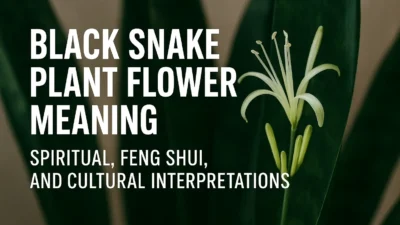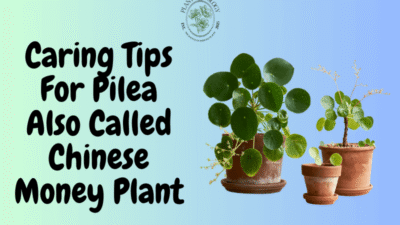The Wandering Jew plant, scientifically known as Tradescantia, encompasses several species like Tradescantia zebrina, T. fluminensis, and T. pallida.
Native to Mexico and Central America, these plants are celebrated for their striking foliage, which features vibrant purple, silver, and green stripes.
Their rapid growth and trailing habit make them ideal for hanging baskets, shelves, or ground cover in warm climates.
Despite their beauty, they are mildly toxic to pets, causing oral irritation or dermatitis upon ingestion. Many gardeners now prefer the name “Wandering Dude” due to the offensive connotations of the traditional name.
Key Characteristics
- Foliage: Heart-shaped leaves with silvery stripes and purple undersides.
- Growth: Fast-growing, trailing vines that can reach up to 14 inches in height and spread.
- Flowers: Small, three-petaled blooms in white, pink, or violet during summer.
- Hardiness: Thrives in USDA zones 9–11 but is typically grown as a houseplant in cooler regions.

Table of Contents
Comprehensive Wandering Jew Plant Care Guide
Light Requirements
Wandering Jews require bright, indirect light for 6–8 hours daily to maintain their vibrant leaf coloration. Direct afternoon sun can scorch leaves, while insufficient light causes fading and legginess. East or west-facing windows are ideal indoors. For outdoor growth, partial shade is recommended.
Watering Practices
Water when the top inch of soil is dry, typically every 7–10 days during active growth. Reduce frequency in winter to prevent root rot. Use well-draining pots and avoid waterlogging, as overly soggy soil leads to yellowing leaves and fungal issues.
Soil and Fertilization
A well-draining, peat-based mix with perlite or compost is ideal. Soil pH should be slightly acidic (5.0–6.0) 19. Fertilize monthly in spring and summer with a balanced, water-soluble fertilizer (e.g., 10-10-10 NPK) diluted to half strength 16. Avoid over-fertilization, which can cause leaf burn.
Temperature and Humidity
- Temperature: Maintain 60–80°F (15–27°C). Protect from frost and drafts.
- Humidity: Prefers 50–70% humidity. Use pebble trays, misting, or humidifiers to increase moisture levels.

Pruning and Maintenance
Regular pruning encourages bushy growth and prevents legginess. Pinch stem tips and trim back overgrown vines 16. Remove yellow or damaged leaves to promote health. Pruning is best done in spring.
Repotting
Repot every 1–2 years in spring using a pot 1–2 inches wider than the current one 58. Gently loosen the root ball and refresh the soil to provide nutrients.
Related Article: Wandering Jew Plant Care: Tips and Guide
How to Propagate Wandering Jew Plants?
Propagation is straightforward via stem cuttings 16:
- Soil Method: Plant 4–6 inch cuttings in moist potting mix. Roots develop in 2–3 weeks.
- Water Method: Place cuttings in water, submerging leaf nodes. Roots emerge in 1–2 weeks; transfer to soil once established.
Troubleshooting Common Issues
Pests and Diseases
- Spider Mites/Aphids: Treat with neem oil or insecticidal soap.
- Root Rot: Caused by overwatering. Ensure proper drainage and reduce watering frequency.
- Leaf Discoloration: Brown tips indicate low humidity or chemical-sensitive water. Use filtered water and increase moisture.
Environmental Problems
- Leggy Growth: Due to insufficient light. Move to a brighter location.
- Faded Leaves: Requires more indirect sunlight.
- Yellow Leaves: Often a sign of overwatering.

FAQ: Wandering Jew Plant Care
1. How often should I water my Wandering Jew?
Water when the top inch of soil is dry, typically every 7–10 days. Reduce frequency in winter.
2. Can Wandering Jew grow outdoors?
Yes, in USDA zones 9–11. It thrives in partial shade and well-draining soil. In cooler climates, grow it in containers and bring indoors during frost.
3. Why are my plant’s leaves losing color?
Insufficient light causes fading. Move to a brighter location with indirect sunlight.
4. How do I make my Wandering Jew bushy?
Regularly pinch stem tips and prune leggy growth. This encourages branching and fuller foliage.
5. Is Wandering Jew toxic to pets?
Yes, it can cause oral irritation and dermatitis in cats and dogs. Keep it out of reach.
6. What’s the best fertilizer for Wandering Jew?
Use a balanced liquid fertilizer (10-10-10 NPK) diluted to half strength, applied monthly during growing seasons.
Display Ideas and Varieties
Popular Varieties
- Tradescantia zebrina: Silvery-green leaves with purple stripes.
- Tradescantia pallida: Deep purple foliage (also called “Purple Heart”).
- Tradescantia fluminensis: Green leaves with white variegation.
Creative Displays
- Hanging Baskets: Showcase trailing vines.
- Shelves and Macramé Hangers: Allow vines to cascade decoratively.
- Mixed Containers: Pair with upright plants for contrast.

Conclusion
Wandering Jew plant care is straightforward with attention to light, water, and occasional pruning. Its vibrant foliage and rapid growth make it a rewarding choice for both beginners and experienced gardeners. By following these guidelines, you can ensure your plant remains healthy and colorful year-round.
Ready to elevate your plant care? Share your experiences or questions in the comments below!


